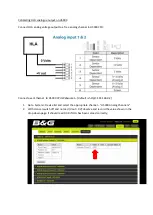
1. Operational Overview
1-3
1.1.2
Chart processor unit
The chart processor unit is responsible for the loading, storing, updating and processing of electronic sea charts, with
the DVD-ROM drive or floppy disk drive. The DVD-ROM and floppy disk drives are behind the lid on the front
panel.
Floppy dIsk drive
DVD-ROM drive
1.2
Turning the Power On/Off
Normally, leave the power switch at the rear of the chart processor on and control power on/off with the
POWER
switch on a control unit. Note that the display unit is powered independently.
After power is applied, the Windows program starts up and about one minute later the bearing scale appears. The
radar then goes into three minutes of warm-up time to warm the magnetron, which transmits radar pulses. The timer
counts the time remaining for warm-up. When the timer has reached 0:00, the indication "ST-BY" appears at the
screen center, meaning the radar is now ready to transmit pulses.
In the stand-by condition, markers, rings, map, charts, etc. are not shown. Further, neither TT nor AIS is active.
If the power is reapplied after the equipment was in the ECDIS mode, Windows starts up and about two minutes
later the ECDIS display appears.
Parameters set on the menus are stored in a non-volatile memory (hard disk) and are preserved when the power is
turned off.
Transmitter ON
After the power is turned on and the magnetron has warmed up, ST-BY appears at the screen center, meaning the
radar is ready to transmit radar pulses. You can transmit by pushing the
STBY/TX
key on the full keyboard, or use
the trackball to select the TX STBY box at the bottom left corner of the display then push the left button. The label
at the left-hand side of the guidance area at the bottom right corner of the screen changes from TX to STBY.
Guidance
box
STBY
/
TX
STBY
TX STBY box
Summary of Contents for FCR-2107 series
Page 42: ...1 Operational Overview 1 20 This page intentionally left blank...
Page 154: ...5 AIS Operation 5 28 This page intentionally left blank...
Page 255: ...7 Vector Chart Material 7 83 Recommended track defined by two beacons...
Page 256: ...7 Vector Chart Material 7 84 Recommended track defined by a building and a beacon...
Page 257: ...7 Vector Chart Material 7 85 Measurement mile tails tails...
Page 298: ...9 Chart Alerts 9 14 This page intentionally left blank...
Page 322: ...10 Route Planning 10 24 This page intentionally left blank...
Page 368: ...14 Backup Operations 14 6 This page intentionally left blank...
Page 404: ...16 Recording Functions 16 16 This page intentionally left blank...
Page 406: ...17 NAVTEX Messages 17 2 This page intentionally left blank...
Page 416: ...19 Parameters Setup 19 8 This page intentionally left blank...
Page 457: ...Appendix 2 IHO ECDIS Chart 1 AP 5 Nature and Man made features Port features...
Page 458: ...Appendix 2 IHO ECDIS Chart 1 AP 6 Depths Currents etc Seabed Obstructions Pipelines etc...
Page 459: ...Appendix 2 IHO ECDIS Chart 1 AP 7 Traffic routes Special areas...
Page 460: ...Appendix 2 IHO ECDIS Chart 1 AP 8 Aids and Services Buoys and Beacons...
Page 461: ...Appendix 2 IHO ECDIS Chart 1 AP 9 Topmarks Color test diagram...
Page 462: ...Appendix 2 IHO ECDIS Chart 1 AP 10 Mariners navigational symbols...
Page 469: ...Appendix 3 Interpreting S57 Charts AP 17 Fog signals Radars Services...
Page 476: ...Appendix 3 Interpreting S57 Charts AP 24 This page intentionally left blank...
Page 511: ...Appendix 5 Digital Interface AP 59 NRX NAVTEX received data...
Page 544: ...Appendix 6 Parts List and Parts Location AP 92 This page intentionally left blank...
Page 550: ...This page is intentionally left blank...
Page 556: ......
















































